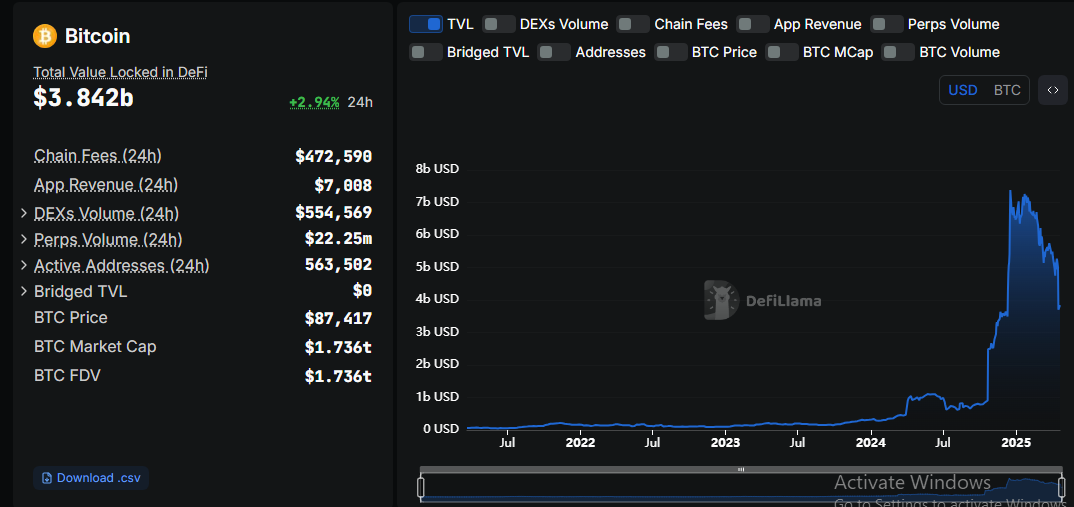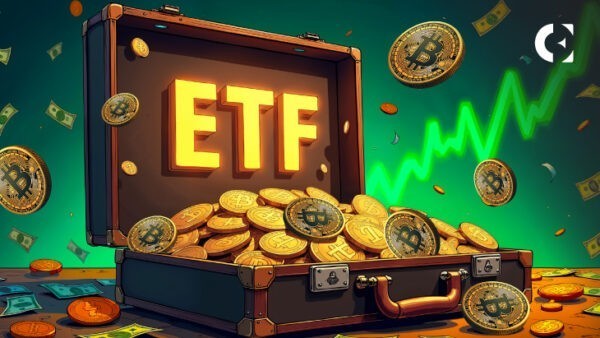Imagine your Bitcoin sitting idle like gold bars in a safety deposit box—locked away, secure, and earning nothing. As of April 21, 2025, the price of Bitcoin stood at $86,768, with a market cap of $1.73 trillion, reflecting a 3.1% uptick that day.
It’s valuable, it’s safe, but it’s just sitting there, doing nothing—sound familiar? It’s the reality for many investors who HODL without putting their BTC to work. Even mainstream outlets report live Bitcoin price changes and highlight its dominant market share, yet utility remains limited.
It’s the undisputed king of crypto, commanding 63% of the $2.75 trillion crypto market. But here’s the rub: most Bitcoin is just held, tucked away in digital wallets like a dusty vault. Isn’t it time Bitcoin did more than play the role of a digital safety deposit box?
The Safety Deposit Box Trap
Back in the day, safety deposit boxes were the go-to for stashing valuables—jewelry, deeds, or gold. They’re secure, but their real value comes when you use what’s inside, maybe by taking a loan against your gold without selling it.
Bitcoin’s in a similar spot. It’s pitched as “finite digital property,” with only 19.85 million of its 21 million coins circulating.
That scarcity drives the price of Bitcoinup. But like a safety deposit box left unopened, Bitcoin’s potential is wasted if it’s just held.
In contrast, gold sees 50% of its demand in jewelry and 13% in tech, per the World Gold Council. Real estate generates rent or loans. Bitcoin? It’s mostly a HODLer’s dream—buy, hold, and hope.
Price of Bitcoin by the Numbers
Let’s break it down. Bitcoin’s $1.73 trillion market cap dwarfs other cryptos, and its $100 billion in ETF holdings, per Coinglass, shows TradFi’s growing interest.
But its utility lags. Bitcoin processes just 7 transactions per second, a far cry from Visa’s 24,000. That’s not a payment system—it’s a bottleneck.
Most of its value is tied to investment, not action. Investors, especially the institutional kind, want assets that work, not just sit pretty. If Bitcoin wants to keep its crown, it needs to hustle.
Here’s where lending comes in. Imagine borrowing against the gold in your safety deposit box without touching it. Bitcoin lending does the same; holders can access cash without selling their BTC.
This adds liquidity and utility, making Bitcoin more than a static store of value. It’s not a new idea, but it’s underdeveloped.
Two paths exist: decentralized finance (DeFi) and centralized finance (CeFi). Each has its strengths, but neither is ready to fully unlock Bitcoin’s potential.
DeFi: Freedom with a Catch
DeFi platforms like Aave, Compound, and Morpho let you lend or borrow wrapped Bitcoin (wBTC). You can bridge BTC to Ethereum via Coinbase’s cbBTC and take loans on Base.

Source: Defillama
Bitcoin DeFi’s total value locked (TVL) hit $3.84 billion. It’s permissionless, meaning no gatekeepers, and you keep custody of your assets. Sounds perfect, right? Not quite.
DeFi’s a maze—complex interfaces, no customer support, and $2 billion in bridge hacks since 2021, per Chainalysis. For retail investors or institutions, it’s a hard pass. Regulatory gray areas don’t help either.
CeFi: TradFi’s Comfort Zone
CeFi platforms offer a smoother ride. They’re like banks for crypto, with user friendly apps and support hotlines. Bitcoin lending volumes on CeFi hit $8.5 billion in August 2024, with forecasts of $45 billion by 2030, per Hodler.io.
That’s growth, but it’s still a drop in Bitcoin’s $1.73 trillion bucket. The problem? Trust. FTX’s 2022 collapse and Celsius’s bankruptcy spooked investors.
TradFi wants proof of reserves, third party security, and clean withdrawal records. CeFi’s working on it, but it’s not there yet.
Regulation could tip the scales. On January, President Trump signed an executive order, “Strengthening American Leadership in Digital Financial Technology,” pushing for crypto friendly policies, per the White House.
It created a Working Group on Digital Asset Markets to draft rules. On March 27, 2025, the FDIC clarified crypto activities for banks, per FDIC.
These moves could make CeFi lending safer, drawing in TradFi’s $100 trillion asset pool, per the Atlantic Council. Clear rules might also ease DeFi’s regulatory woes, but CeFi’s structure aligns better with institutional needs.
Building a Lending Ecosystem
The dream is a vibrant lending market where DeFi and CeFi thrive side by side. DeFi’s innovation suits crypto natives, while CeFi’s polish attracts TradFi. Think of real estate—when you need a mortgage, you’ve got countless lenders to choose from.
Bitcoin needs that variety. Current lending volumes—$3.84 billion in DeFi, $8.5 billion in CeFi—are peanuts compared to Bitcoin’s market cap.
Scaling up means building trust, simplifying DeFi, and nailing regulation. A “spoilt for choice” market would signal a healthy crypto ecosystem.
Bitcoin’s $1.73 trillion empire is built on scarcity, but its future depends on utility. Lending could turn it from a digital safety deposit box into a financial workhorse, letting holders borrow or earn without selling.
With $100 billion in ETFs and lending markets growing, the foundation is there. But hurdles remain: DeFi’s complexity, CeFi’s trust gaps, and regulatory uncertainty. Price of Bitcoin is surely at a crossroads.
It can hustle—embracing lending to rival gold and real estate—or it can bust, fading as a relic of untapped potential. The choice is clear, but the path isn’t easy.














Leave a Reply